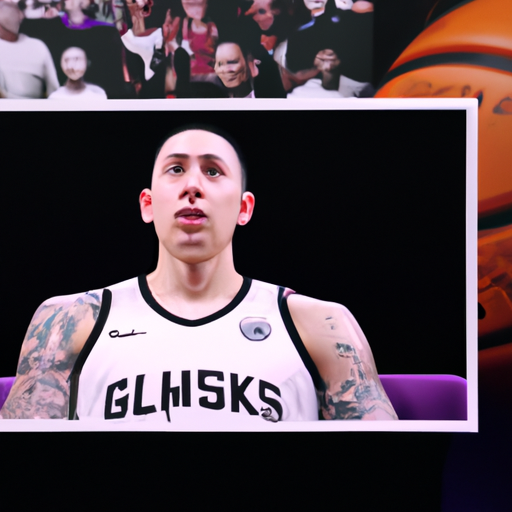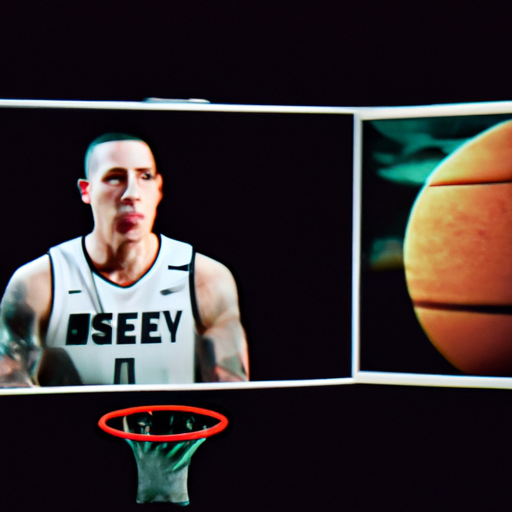Mike Bibby reveals why he thinks Linsanity ended

The Impact of Injuries on Linsanity’s End
Mike Bibby, a former NBA player, recently shared his thoughts on why he believes Linsanity came to an end. Linsanity, a phenomenon that took the basketball world by storm in 2012, refers to the incredible rise of Jeremy Lin, a relatively unknown player at the time, who captivated fans with his exceptional performances for the New York Knicks. Bibby’s insights shed light on the impact of injuries on Lin’s career trajectory.
Injuries are an unfortunate reality in professional sports, and they can have a significant impact on a player’s performance and career. Bibby believes that injuries played a crucial role in bringing an end to Linsanity. Lin’s meteoric rise to stardom was abruptly halted by a knee injury during the 2012-2013 season. This injury forced him to miss a significant portion of the season, and when he did return, he was not the same player he once was.
Bibby points out that knee injuries can be particularly challenging for basketball players. The constant running, jumping, and cutting put immense strain on the knees, making them susceptible to injury. Lin’s explosive style of play, characterized by his lightning-quick drives to the basket and acrobatic finishes, made him especially vulnerable to knee injuries. Bibby believes that the knee injury he suffered during Linsanity was a turning point in his career.
Following his knee injury, Lin struggled to regain his form and confidence on the court. He was no longer able to execute the same explosive moves that had made him a sensation. This decline in performance led to a decrease in playing time and ultimately affected his overall impact on the game. Bibby suggests that the physical limitations imposed by the injury took a toll on Lin’s mental game as well, as he was no longer able to play with the same fearlessness and aggression that had defined his style.
Moreover, Bibby highlights the psychological aspect of injuries and their impact on a player’s mindset. Lin’s knee injury not only affected his physical abilities but also had a profound effect on his mental state. The fear of reinjury and the constant worry about pushing his body too hard may have hindered his ability to fully commit to his signature style of play. This mental barrier could have further contributed to the decline of Linsanity.
Injuries are a part of any athlete’s journey, and they can be incredibly challenging to overcome. Bibby’s insights into the impact of injuries on Linsanity provide valuable perspective on the complexities of a player’s career. While Lin’s rise to stardom was undoubtedly remarkable, it serves as a reminder of the fragility of success in the face of physical setbacks.
In conclusion, Mike Bibby’s analysis sheds light on the role injuries played in bringing an end to Linsanity. Lin’s knee injury during the 2012-2013 season significantly impacted his performance and confidence on the court. The physical limitations imposed by the injury, coupled with the psychological toll it took, ultimately led to a decline in his playing time and overall impact. Linsanity serves as a reminder of the challenges athletes face in overcoming injuries and maintaining their success in the competitive world of professional sports.
Analyzing the Role of Coaching in Linsanity’s Decline

Mike Bibby, a former NBA player, recently shared his thoughts on why he believes Linsanity came to an end. Linsanity, the phenomenon that took the basketball world by storm in 2012, refers to the incredible rise of Jeremy Lin, a relatively unknown player at the time, who captivated fans with his exceptional performances for the New York Knicks. Bibby’s analysis focuses on the role of coaching in the decline of Linsanity.
According to Bibby, coaching played a significant role in the decline of Linsanity. He believes that the coaching staff failed to adapt their strategies to maximize Lin’s potential and instead relied too heavily on his individual brilliance. Bibby argues that while Lin’s initial success was undoubtedly impressive, it was unsustainable without proper coaching support.
One of the key issues Bibby highlights is the lack of a clear offensive system that could fully utilize Lin’s skills. He suggests that the coaching staff failed to develop a cohesive game plan that would allow Lin to thrive consistently. Instead, they relied on Lin’s ability to create his own opportunities, which eventually became predictable and easier for opposing teams to defend against.
Furthermore, Bibby points out that the coaching staff did not effectively manage Lin’s minutes and workload. He believes that Lin was overplayed, leading to fatigue and increased vulnerability to injuries. Bibby argues that a more balanced approach to managing Lin’s playing time could have prolonged his success and prevented the decline of Linsanity.
Another aspect Bibby highlights is the lack of support from the coaching staff in developing Lin’s overall game. While Lin was undoubtedly a talented scorer, Bibby suggests that the coaching staff failed to help him improve other aspects of his game, such as his defense and decision-making. Without a well-rounded skill set, Lin became easier to exploit by opposing teams, ultimately contributing to the decline of Linsanity.
Bibby also criticizes the coaching staff’s handling of the media attention surrounding Lin. He argues that the constant media scrutiny and pressure placed on Lin affected his performance on the court. Bibby believes that the coaching staff should have shielded Lin from unnecessary distractions and provided him with the necessary support to handle the newfound fame and expectations.
In conclusion, Mike Bibby’s analysis of the decline of Linsanity focuses on the role of coaching. He believes that the coaching staff failed to adapt their strategies, develop a cohesive offensive system, manage Lin’s minutes effectively, and support his overall development. Bibby suggests that these factors ultimately led to the decline of Linsanity. While Lin’s initial success was remarkable, it was unsustainable without proper coaching support. Bibby’s insights shed light on the importance of coaching in maximizing a player’s potential and maintaining long-term success.
Exploring the Pressure and Expectations on Jeremy Lin during Linsanity
Mike Bibby, a former NBA player, recently shared his thoughts on why he believes Linsanity, the phenomenon surrounding Jeremy Lin’s rise to stardom, eventually came to an end. Bibby’s insights shed light on the immense pressure and expectations that Lin faced during that time.
During the 2011-2012 NBA season, Jeremy Lin burst onto the scene with the New York Knicks, captivating fans and media alike with his electrifying performances. Lin, an undrafted player out of Harvard, quickly became a sensation, leading the Knicks to a series of victories and igniting a global frenzy known as Linsanity.
According to Bibby, one of the main reasons Linsanity eventually fizzled out was the immense pressure that Lin faced. As the spotlight grew brighter, so did the expectations placed upon him. Bibby believes that the constant scrutiny and high demands took a toll on Lin’s performance and mental well-being.
The media frenzy surrounding Linsanity was unprecedented. Lin’s every move was scrutinized, and the expectations placed upon him were sky-high. Fans and analysts alike expected him to consistently deliver jaw-dropping performances, which became increasingly difficult as opposing teams began to devise strategies to contain him.
Bibby also points out that the pressure on Lin was not just external but also internal. Lin himself had high expectations for his own performance, and the weight of living up to those expectations became overwhelming. As Bibby explains, “When you’re playing at such a high level, it’s hard to maintain that level of play consistently. The pressure to perform night in and night out can be mentally and physically draining.”
Furthermore, Bibby highlights the challenges Lin faced in adapting to the changing dynamics within the team. As the Knicks’ star players, such as Carmelo Anthony and Amar’e Stoudemire, returned from injuries, Lin’s role on the team shifted. He went from being the primary playmaker to having to share the ball and adjust his game to accommodate the team’s established stars.
The adjustment period was not easy for Lin, as he had to find a balance between being a facilitator and maintaining his own scoring prowess. This transition, coupled with the pressure to perform, may have contributed to the decline of Linsanity.
Bibby’s insights into the pressure and expectations on Jeremy Lin during Linsanity shed light on the challenges faced by athletes in the spotlight. The constant scrutiny, high demands, and internal pressure can take a toll on even the most talented players.
It is important to remember that Linsanity was a remarkable moment in NBA history, showcasing the incredible skills and resilience of Jeremy Lin. While it may have eventually come to an end, the impact and legacy of Linsanity continue to inspire and captivate fans around the world.
In conclusion, Mike Bibby’s perspective on why he believes Linsanity ended provides valuable insights into the immense pressure and expectations faced by Jeremy Lin during that time. The media frenzy, external and internal pressures, and the challenges of adapting to changing team dynamics all played a role in the decline of Linsanity. Nonetheless, the impact of Linsanity remains a testament to Lin’s talent and the enduring fascination with his remarkable rise to stardom.

